#Bodley Head
Text




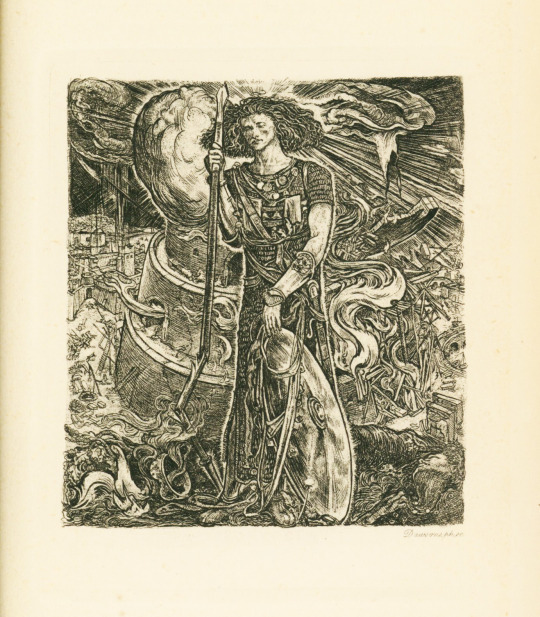







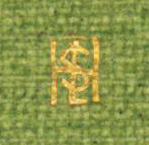
Publishers' Binding Thursday
Today's Publishers' Binding Thursday book was found while simply browsing our stacks—and what a find it is! This is Poems, Dramatic and Lyrical by English poet, coin enthusiast, and botanist John Leicester Warren, Lord de Tabley (1835-1895). It was published in London by Elkin Mathews (1851-1921) and John Lane (1854-1925) at the Sign of the Bodley Head and in New York by Macmillan and Company in 1893. The book features five engravings by British artist, illustrator, and printer Charles Ricketts (1866-1931) and the bookplate of John Leicester Warren designed by Scottish artist William Bell Scott (1811-1890). Warren had an interest in bookplates and became an authority on them.
The binding was designed by Charles Ricketts, possibly with help from someone with the initials H.L.S. (or those initials in another order). Ricketts's initials and those of the mysterious H.L.S. are stamped in gold in opposite corners of the covers—C.R. in the top left and H.L.S. in the bottom right. The cover features in the upper righthand corner an angel inside of a golden heart holding a lyre made from wings and a heart. Surrounding this is a pattern of repeated rose petals, which to us look a bit like teeth or hot air balloons. The book cloth is a leafy green color that on our copy has either been glued unevenly or has become rumpled with time.
View more Publishers' Binding Thursday posts.
-- Alice, Special Collections Department Manager
#Publishers' Binding Thursday#publishers' bindings#Poems Dramatic and Lyrical#John Leicester Warren#Lord de Tabley#Elkin Mathews#John Lane#Sign of the Bodley Head#Bodley Head#Macmillan and Company#Charles Ricketts#William Bell Scott
41 notes
·
View notes
Photo

James Joyce, (1922), Ulysses, Edited by Hans Walter Gabler, with Wolfhard Steppe an Claus Melchior, Introduction by Anne Enright, Afterword by Michael Groden, Vintage Classics, London, 2022 [edition first published by The Bodley Head in 1986] [National Library of Ireland, Dublin. Penguin Books, London]
#graphic design#book#cover#book cover#james joyce#ulysses#hans walter gabler#wolfhard steppe#claus melchior#anne enright#michael groden#vintage classics#the bodley head#national library of ireland#penguin books#1920s#1980s#2020s
66 notes
·
View notes
Text

Marcel Veronese & Jean-Claude Peretz - Mademoiselle 1 + 1 - The Bodley Head - 1968
#witches#mademoiselles#occult#vintage#mademoiselle 1 + 1#the bodley head#marcel veronese#jean-claude peretz#1968#porcelain oil lamps
37 notes
·
View notes
Text
Why I'm Not Allowed On Twitter Unsupervised Any More: A Photo Essay

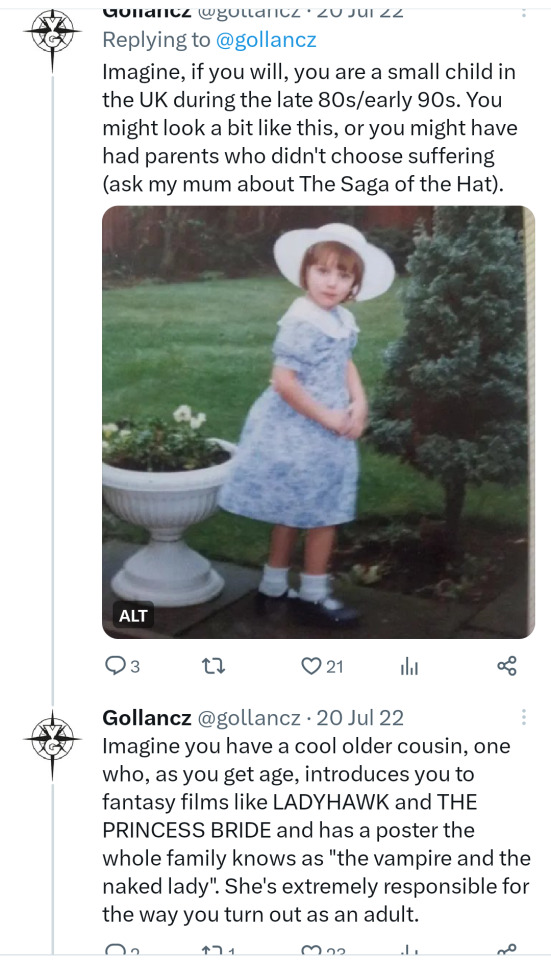

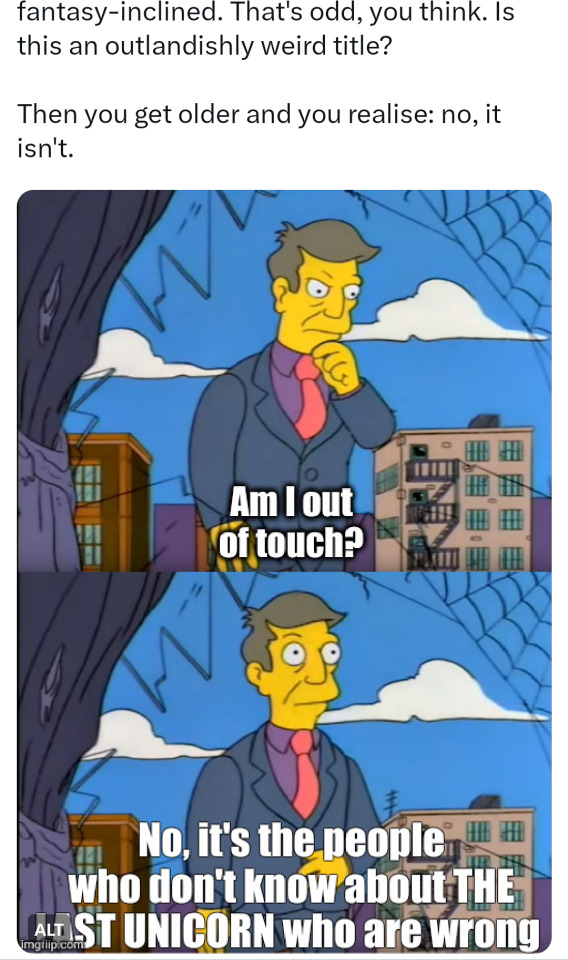
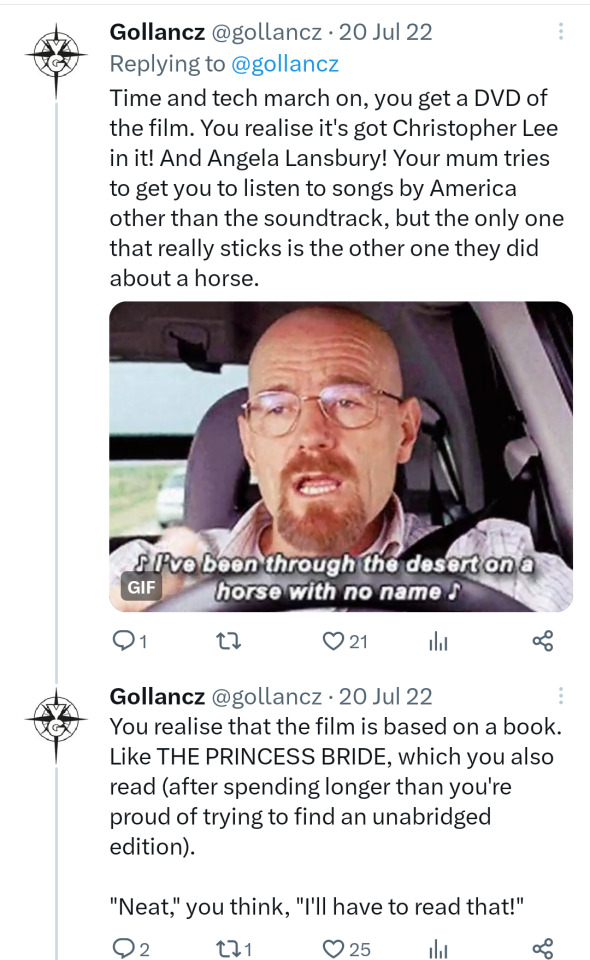
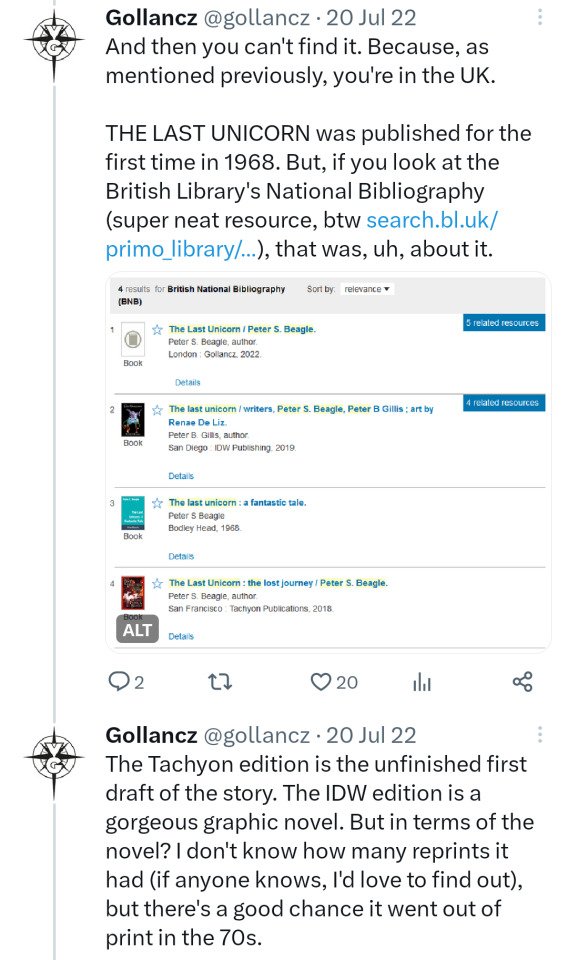
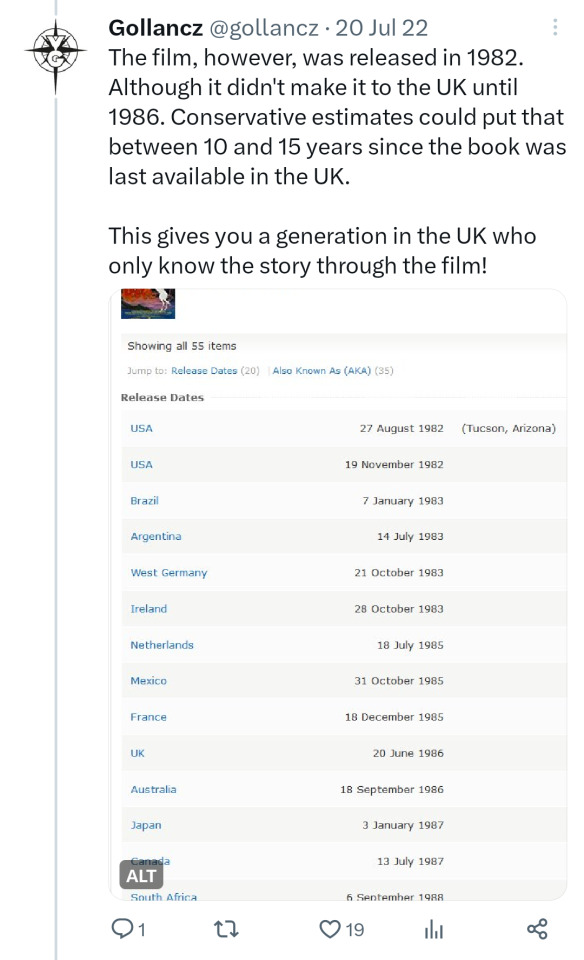





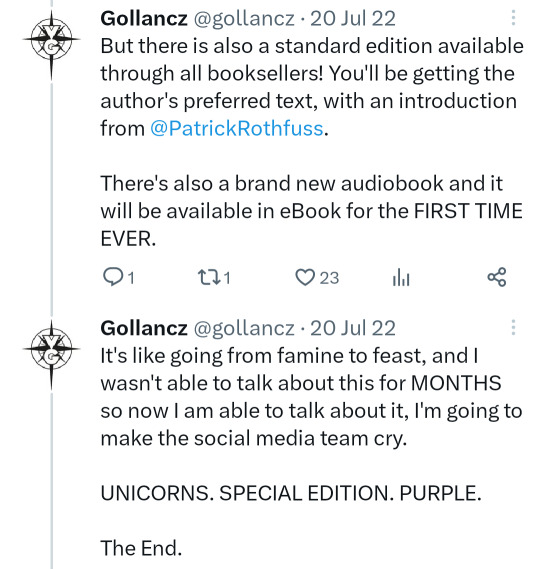
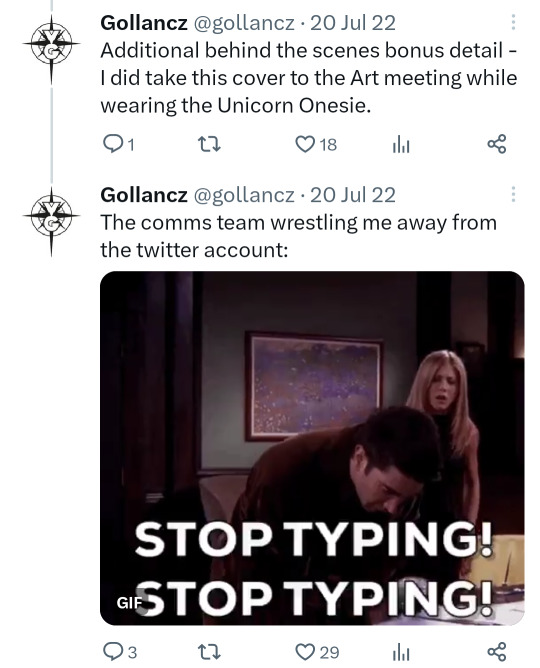
Key Notes:
Since this was posted I discovered that the books had briefly been available in the UK under the name Peter Beagle rather than Peter S. Beagle in the mid-90s, which is why they didn't show up on the British Library search
The article by Tor.com @torbooks: Peter S. Beagle Has Finally Regained the Rights to His Body of Work
If you want our gorgeous limited edition, I believe there are still a handful left (except for the US and Canada, sorry lads), and you can get it here. I'm not kidding when I say I got a little teary-eyed when these showed up.
[Image Description: A tweet thread from the Gollancz twitter dated 20th July 2022, which goes as follows -
Tweet 1: You may have seen that we're printing a Brand New Edition of The Last Unicorn. We're very excited! I was asked to tweet about it. I wasn't asked to do it quite like this, but I also wasn't asked NOT to do it like this, and I have the twitter login so whose fault is that? (Thread emoji, and gif from the film Scream reading 'The Call is coming from inside the house!')
Tweet 2: Imagine, if you will, you are a small child in the UK during the late 80s/early 90s. You might look a bit like this, or you might have had parents who didn't choose suffering (ask my mum about The Saga of the Hat) (an image of a small girl approximately 3 years old wearing a blue dress and a big white hat)
Tweet 3: Imagine you have a cool older cousin, one who, as you get age, introduces you to fantasy films like Ladyhawk and The Princess Bride and has a post the whole family knows as 'the vampire and the naked lady'. She's extremely responsible for the way you turn out as an adult.
Tweet 4: One year, for your birthday, this cousin buys you a video. It's the first video that is yours, not to share. It has a bright yellow cover. The butterfly scares you. But you watch it on a loop. You don't realise how special it is, but it's a seed that burrows into your brain. (An image of a VHS of The Last Unicorn)
Tweet 5: A decade or so later, in your teens, you rediscover it. None of your friends have heard of it, despite also being fantasy-inclined. That's odd, you think. Is this an outlandishly weird title? Then you get older and you realise: no, it isn't. (Principal Skinner meme reading 'Am I out of touch? No, it's the people who don't know about The Last Unicorn who are wrong')
Tweet 6: Time and tech march on, you get a DVD of the film. You realise it's got Christopher Lee in it! And Angela Lansbury! Your mum tries to get you to listen to songs by America other than the soundtrack, but the only one that really sticks is the other one they did about a horse. (Gif of Walter White from Breaking Bad singing along to Horse With No Name)
Tweet 7: You realise that the film is based on a book. Like The Princess Bride, which you've also read (after spending longer than you're proud of trying to find an unabridged edition). 'Neat,' you think, 'I'll have to read that!'
Tweet 8: And then you can't find it. Because, as mentioned previously, you're in the UK. The Last Unicorn was published for the first time in 1968. But, if you look at the British Library's National Bibliography (super neat resource btw), that was, uh, about it. (screenshot of the search results from the National Bibliography showing four editions of The Last Unicorn by Peter S. Beagle, one from Gollancz in 2022, one from IDW in 2019, one from Tachyon Publications in 2018, and one from Bodley Head in 1968)
Tweet 9: The Tachyon edition is the unfinished first draft of the story. The IDW edition is a gorgeous graphic novel. But in terms of the novel? I don't know how many reprints it had (if anyone knows, I'd love to find out), but there's a good chance it went out of print in the 70s.
Tweet 10: The film, however, was released in 1982. Although it didn't make it to the UK until 1986. Conservative estimates could put that between 10 and 15 years since the book was last available in the UK. This gives you a generation in the UK who only know the story through the film! (A screenshot of the IMDB page showing the different release dates for The Last Unicorn around the world)
Tweet 11: The screenplay was written by Peter S. Beagle, and made by the legendary animation directors Arthur Rankin Jr. and Jules Bass. That's right, the guys behind Thundercats and 2 out of the 3 films based on The Hobbit and The Lord of the Rings.
Tweet 12: The Book has been in print in the USA (and possibly all of North America) constantly since its publication, so it seems baffling that people in the UK haven't heard of it. As the internet became more prominent, however, it became easier to just... import a copy of the book.
Tweet 13: But! This also isn't quite as simple as you think. You see, until last year the rights to The Last Unicorn were tied up in legal limbo. And the US edition of the book contained changes that Peter wasn't happy with. (Link to the Tor.com article about the rights)
Tweet 14: Back to you, the 80s/90s kid, who is now an adult, happy that unicorns are A Thing again and you're living your best life. You're very easy to buy presents for. Your partner despairs of unicorns. You get a job working in books about magic and space. (unicorn emoji and photograph of a collection of unicorn memorabilia, including three different versions of The Last Unicorn)
Tweet 15: You mention that one day you would like to publish The Last Unicorn. That if you did, you would like to do a really beautiful edition of it. And you would like it to be purple. Because since the film is what you know, you associate it with purple.
Tweet 16: And, after taking a very circuitous route, here we are! This is the original text, that was first published in 1968. Reading it after you have only seen the film is the strangest experience - like being introduced to a very dear friend that you have never met before.
Tweet 17: Peter's screenplay kept the voice of the story so well, you can hear the characters when you read the book. But now there's so much more depth, softness and warmth to it. The butterfly doesn't seem so scary any more. And, it's beautiful. And it's purple. (Image of a hardback edition of The Last Unicorn, with a black base, purple background, and a linocut image of the unicorn in her wood. On the black cover underneath is a foiled unicorn with the moon and butterfly, the page edges are sprayed purple, and the endpapers are black with silver butterflies)
Tweet 18: Anyway, I've taken you on a three day trip that could have been done in a single tweet, but that's what happens when you let me drive. This edition is the limited exclusive one only available through the Gollancz Emporium and you can preorder here: (link to Gollancz Emporium)
Tweet 19: But there is also a standard edition available through all booksellers! You'll be getting the author's preferred text, with an introduction from Patrick Rothfuss. There's also a brand new audiobook and it will be available in eBook for the first time ever.
Tweet 20: It's like going from famine to feast, and I wasn't able to talk about this for months so now I am able to talk about it, I'm going to make the social media team cry. UNICORNS. SPECIAL EDITION. PURPLE. The End.
Tweet 21: Additional behind the scenes bonus detail - I did take this cover to the art meaning while wearing a unicorn onesie.
Tweet 22: The comms team wrestling me away from the twitter account: (gif of Ross from Friends shouting 'Stop typing! Stop typing!')
End ID]
400 notes
·
View notes
Text
Bestiaryposting Results -- Hreksong
Slightly awkward timing on this one: the animal in question happened to come up on a recent episode of our podcast (We literally quoted a line from the Bodley MS 764 entry, because it was relevant to the story we were reading). So any of the artists who listen may have gotten spoilers. (I say "may", but I've already seen one art post that references the episode.) Sorry about that, artists. Kind of a bizarre coincidence, actually -- it's pretty rare that we happen across bestiary material in a narrative text, and the fact that we did so shortly before the relevant entry came up in the rotation... well, the odds are against it.
Anyway, anyone who doesn't know what this is about should check out https://maniculum.tumblr.com/bestiaryposting. You can also check the "maniculum bestiaryposting" tag to see what beast is the current prompt. The entry for this week's drawings can be found here:
Art below the cut, roughly chronological, as always.
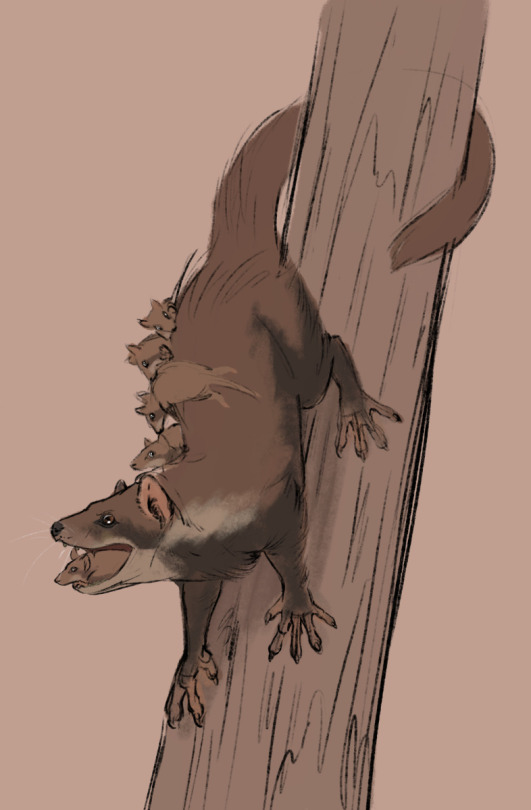
@silverhart-makes-art (link to post here) decided that the best interpretation of the information given was that this was a sort of arboreal mongoose that practiced mouthbrooding. If you want to know what the reasoning was there, you should read the linked post -- it all makes sense there. I absolutely love that the one in the picture is opening its mouth to show the baby riding inside. Silverhart indicates that this is a quicker sketch than usual, but frankly their animal-drawing skills are so good that even a quick sketch is impressive from my perspective.
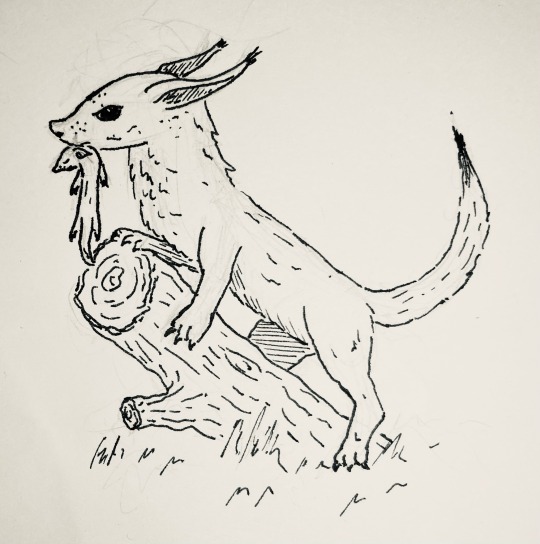
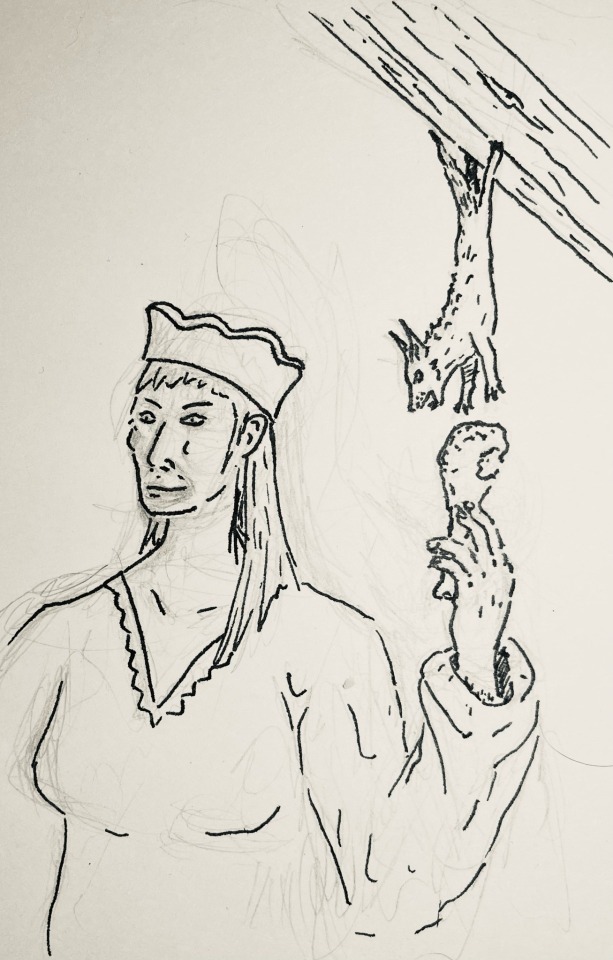
@cheapsweets (link to post here) did separate drawings for the large outdoor version (upper image, carrying its young) and the small indoor version (lower image, stealing someone's food). The linked post, which explains the design in some detail, indicates that CheapSweets was thinking along similar lines as Silverhart -- i.e., what kind of animal is known for hunting snakes? I like the pose in the first image, and I really like the scene depicted in the second one. On one hand, I'm sure having little creatures live in your roof and steal food literally out of your hands is quite frustrating, but on the other hand, it's very funny. Look at that little guy just brazenly stealing some chicken (or whatever type of bird). The idea of them using their back legs to grip rafters for exactly this purpose is excellent.

@strixcattus (link to post here) decided these could be birds, and has drawn these owl-like creatures for us. They look a bit surly, but that could just be the feather pattern on their faces. As always, I strongly recommend checking out that linked post, as Strixcattus writes brilliant interpretations of these entries in the register of a modern naturalist to accompany the illustrations.
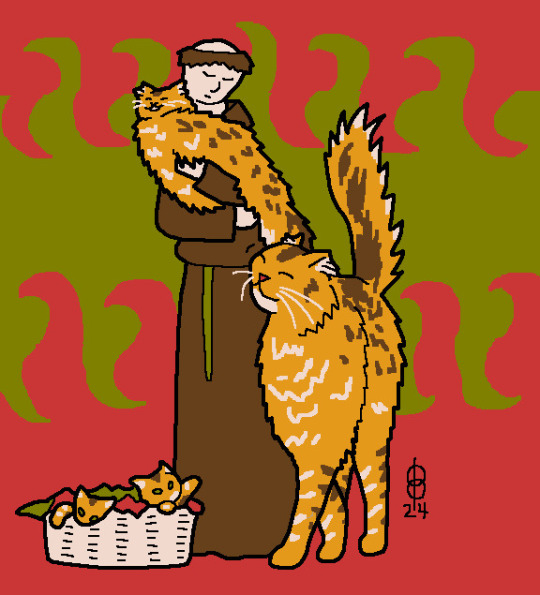
@pomrania (link to post here) has noted that cats live in houses and eat mice, and given us this charming domestic scene. They also note the issues with this interpretation in the linked post, which of course you should read. I think the poses of the cats are very well done here; one of those kittens looks like it wants to paw at the monk's belt but can very much not reach.
And now for the Aberdeen Bestiary:

I'm not sure about the head proportions -- I'd suggest that the flattened snout is because the artist ran out of space, if it weren't for the fact that they were fine letting the back foot extend into the border -- but that is recognizably a weasel.
A few things to note from this:
1. Medieval people apparently had not only mice in their homes, but weasels, which I'd never really thought about. I'm not sure what the distinction they're drawing between the type you find in your home and the type you find in the woods is about, though.
2. The weasel's healing magic crops up in multiple texts, including the Lais of Marie de France and Volsungasaga. It's less common than you might think to find overlap between bestiary-weirdness and narrative-weirdness, so that's pretty notable.
3. I have no friggin' idea why anyone thought they gave birth through their ears. Baffling.
45 notes
·
View notes
Text

Marjorie Bowen (Gabrielle Margaret Vere Campbell Long) - The Last Bouquet, Some Twilight Tales (Bodley Head, 1933).
Cover art by Dorothy Mary L. Burroughes.
#gabrielle margaret vere campbell long#marjorie bowen#the last bouquet - some twilight tales#dorothy mary l. burroughes#horror literature#horror art#horror books#old books
64 notes
·
View notes
Text

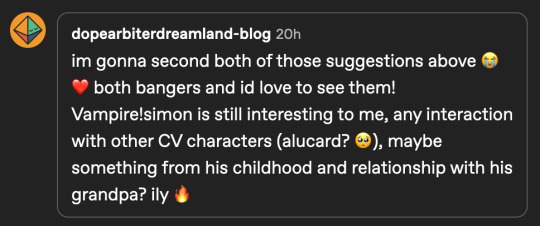
Combining these two requests. Specifically, Simon being threatened by the townspeople, and vampire!Simon. Tried a more experimental writing style to emphasize his disjointed thoughts. I hope you both like it! @chibishortdeath @dopearbiterdreamland-blog
CW: blood and injury
The morning sun burns his bloodshot eyes. Another sleepless night has come and gone. Simon is slumped against the outer wall of Bodley mansion, shying away from the encroaching sunlight.
Daybreak offers little protection in these parts, where Dracula’s influence still hangs heavy, but it is far better than the night. Simon can now try to get more information from the townsfolk of Doina, not too far off.
Simon attempts to stand, and his legs won’t obey him. Instead, he uses the dilapidated wall of Bodley mansion as support as he hoists himself up to standing with great difficulty.
A gloved palm moves to press over his eye. His head is pounding. Surely due to a combination of exhaustion and lack of nourishment. Food and drink has been a rarity over the last few days, and while Simon knows that his body needs it, time is against him. He hasn’t the luxury to slow down, rest, recuperate… no, even if time feels stagnant in the mansions, too, it still flows.
His illness is worsening with each passing day. With each acquired part of Dracula’s cursed body in his possession, the air feels thinner. Hunger worsens.
If nothing else, he needs to drink water, and soon.
Simon suddenly remembers the holy water strapped at his hip.
God forgive him for what he’s about to do. Trembling hands retrieve one vial. Lacking precise coordination, he manages to uncork it.
A gentle prayer for forgiveness and Simon brings the vial to his lips. He takes a swig.
Golden eyes flash open as Simon is sent to his knees. Palms land firmly on the ground in front of him, shattering the empty vial on impact.
Simon does not focus on the glass puncturing his hand.
His throat burning is far more painful.
Simon does what he can to expel the fluid from his body, but the damage was done: his throat and mouth are blistered and raw. The texture on the roof of his mouth is all wrong. The only comfort he has is the sensation of his own blood pooling his mouth. It’s soothing in the worst way.
He wheezes as tears, opaque and red, brim his eyes. Blood drips from his mouth onto the ground beneath.
Why?
He crumbles further, bowing his head.
Why would holy water burn him? Was it poisonous?
…No.
Of course not.
Of course.
Using his undamaged hand, Simon moves gracelessly to retrieve a cross in his satchel, trembling.
The metal is hot. He grips it harder. The heat is unrelenting, even through his gloved palm.
Soon, there’s a stink of hot leather.
Then burning flesh.
Simon grips the cross as hard as he can until he can hold it no longer, and he releases it reflexively.
The metal cross clatters to the ground, and Simon examines his hand.
It’s badly blistered.
Of course.
A wheeze—a pathetic attempt at a laugh—escapes him.
The hunter had become the very thing he set out to destroy:
a cursed creature of the night.
No…
Simon’s forehead is now on the ground. He’s gritting his teeth, hard, as he processes.
It can’t be, he—
His lip trembles, and a foreign sound escapes him:
a sob, broken and distorted through his damaged vocal folds.
He has brought shame to the Belmont name. Besmirched their bloodline. This is beyond what even Soleil Belmont had endured before him. And Simon is well aware of what followed for him.
Possession was horrendous enough, but to become…
The crushing weight pulls Simon down further into despair.
He mutters pleas for forgiveness from God, begs him for an explanation. What manner of beast is he now? Has God deemed him a sinner? Is this a punishment? A test?
Oh, God.
He can’t return home. Not like this.
He cannot hope to return to his wife and his child as he is now.
He can’t hold them, with the hands of a monster…
After he finishes his quest, Simon has no choice but to—to—
blood streaks down his cheeks as he weeps quietly to himself.
One of the rare moments he’s grateful for his perfect solitude. He doesn’t want anyone to see him this way.
But he’s wasting precious time.
After he rides out his sorrow, Simon hoists himself to standing at last. He wipes the blood from his cheeks and his mouth before drawing his cloak over his head. Hopelessness anchor each of his heavy and imbalanced footsteps forward, seeking temporary sanctuary in the town of Doina.
He swallows the blood in his mouth as he enters the town gates. He takes note of the first person he sees. Simon tries with all of his might to look presentable as he approaches.
He doesn’t even need to open his mouth before the man is staring daggers at him.
“Belmont,” he seethes. “After Castlevania, I warned you not to return.”
Simon tries to make himself non-threatening as he whispers through damaged lips: “I beg your understanding, I only need to purchase food and water. Then I will leave.”
The stranger scoffs, stepping aside to grant Simon entry. Bowing his head, Simon hurries into the first shop he finds.
Simon enters quietly, noting the stagnant, dust-filled air. The stink of garlic and sage accosts his senses next: the people of Doina seem equipped to fend from vampires.
Normally, Simon would be thrilled to see them take their precautions.
Instead, he fights the nausea that threatens to send him to his knees as he crosses the threshold into the room.
An older woman stands behind the counter. Immediately, she is wary of him, without even needing to look at him.
“What would you like to buy?” She asks, strained.
“Water, please,” Simon croaks, fishing around for coinage in his satchel. “And food, if you have any to spare. Anything will do.”
He places a bag of coin on the counter, and the woman takes it, but not before noting Simon’s blistered and bloody hands.
Her gaze follows upwards to Simon’s face.
She gasps as she takes in his face: gaunt, sullen, stained with blood
and his eyes, undeniably inhuman.
The woman drops the coins on the counter before she grabs an item nearest to her:
holy water.
Simon recoils with recognition as she readies it in her hand.
“Get back!” She shouts, raising her arm in a threatening way.
Simon merely raises his hands in obedience, stepping back and out of the shop as quickly as he entered it.
He hurries deeper into town, tightening his cloak around his face.
Was his countenance really that frightening? Do they… know?
Is it obvious?
Is he really—
It doesn’t matter. He needs water. He needs food. Information, most of all—that’s his primary objective, no matter what. He can get water and food elsewhere. He’ll hunt something. Back on task.
How many days has it been?
How many days are left?
Simon grits his teeth as he tries to calm his building anxiety, approaching another villager.
He skips the pleasantries this time: “sir, I beg your patience—do you have any information concerning Dracula?”
The other quirks a brow in reply, saying nothing as he studies Simon before him.
Stifling his exasperation, Simon clarifies: “Forgive me, I’m Simon Belmont, I’m seeking information to bring an end to Dracula’s curse on this land—“
“That’s in poor taste.” The other scoffs. “It’s a bit late for that, ‘Simon Belmont’. Do you take me for a fool?”
“No, sir.” Simon replies readily, trying to process what he has done to upset this stranger.
“You look nothing like Simon Belmont,” the other criticizes.
“Forgive my countenance, I’ve travelled a great distance hailing from Jova—“
“He wouldn’t dare show his face here again. Simon Belmont is likely sitting in his estate blissfully unaware of our suffering here.”
Simon’s mouth falls open, how can he even reply to that? This person thinks he’s lying. How could he be seen this way, after everything he’s done, after everything he’s—after—after—
There’s no time.
There’s no time, damn it!
Simon is unable to control the rage that boils over as he takes the man by his cloak, hard, and shoves him against the brick wall behind him. He pins him there with all of his might.
“Tell me what you know! Now!” Simon barks, bearing his blood-stained teeth.
“Vampire!” The man screams in recognition. “There’s a vampire among us!”
Simon’s eyes widen at the implication, and he’s quick to release the man and break away.
His walk turns into a jog as he hurries past prying eyes, taking refuge in an empty alley.
He paces, hands moving to wipe his face. He spits the blood from his mouth.
What is he doing?
He’s wasting time.
Simon, concealing himself tightly in his cloak, moves to exit the town.
Someone obstructs his path—the man from the gate entrance, he—
has a stake in hand.
“You’ve upset the people,” he growls, taking a step forward. Simon recoils, stepping back.
“There has been a misunderstanding,” Simon tries.
His pleas fall on deaf ears.
Simon battles emotions that threaten his composure: rage, shame, sorrow.
Have his efforts meant nothing to the people of the realm?
His sacrifice? His illness? He’s trying, even now—all of these years later. For God. For the people. For his family.
Simon fights with all of his might and yet—
“Now get out of town!” The other yells.
Simon knows, in his heart, that the stranger won’t try to drive that stake into him.
But their words have damaged him enough.
Simon squanders his emotions as he walks past, exiting the town.
Only when he is a safe enough distance away, does he allow his sorrow to come to the surface.
Tears of blood blind him as he wanders to the next location.
#alternatively titled: simon's no good very bad day#featuring lines from the game#akumajou dracula#castlevania#simon belmont#castlevania 2#castlevania ii#castlevania 2: simon's quest#castlevania ii: simon's quest#simon's quest#my writing
21 notes
·
View notes
Text
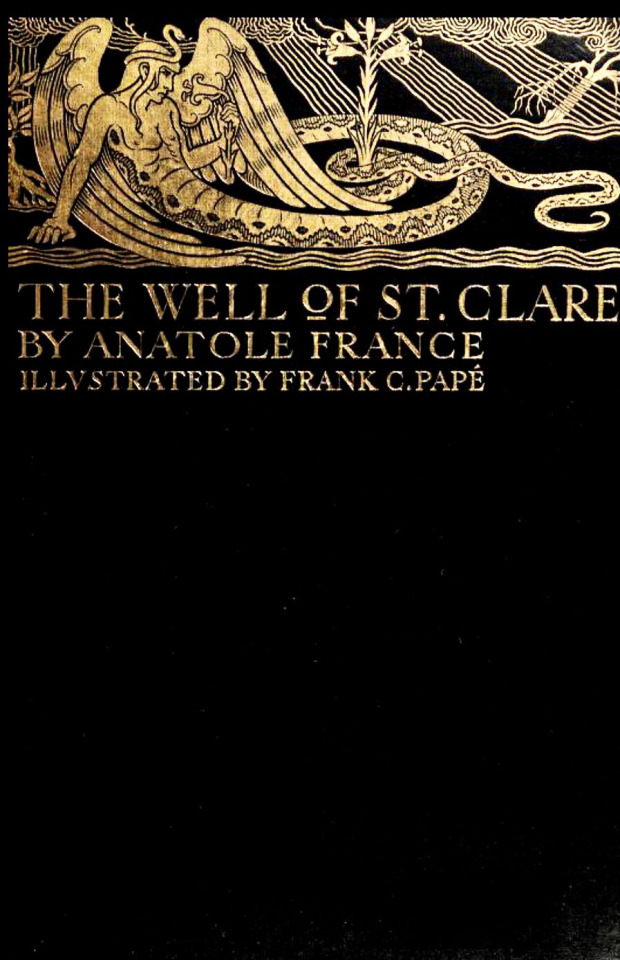
THE WELL OF ST. CLARE by Anatole France (London/New York: Bodley Head/John Lane, 1909). Illustrated by Frank C. Papé.



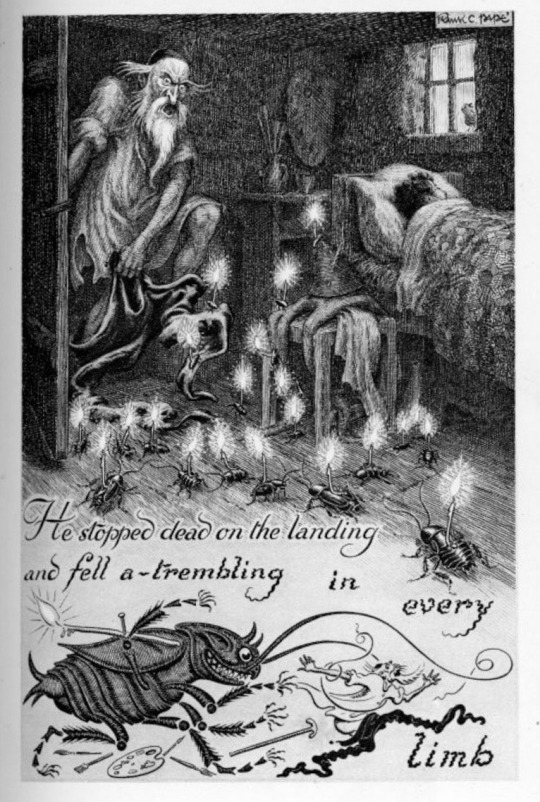

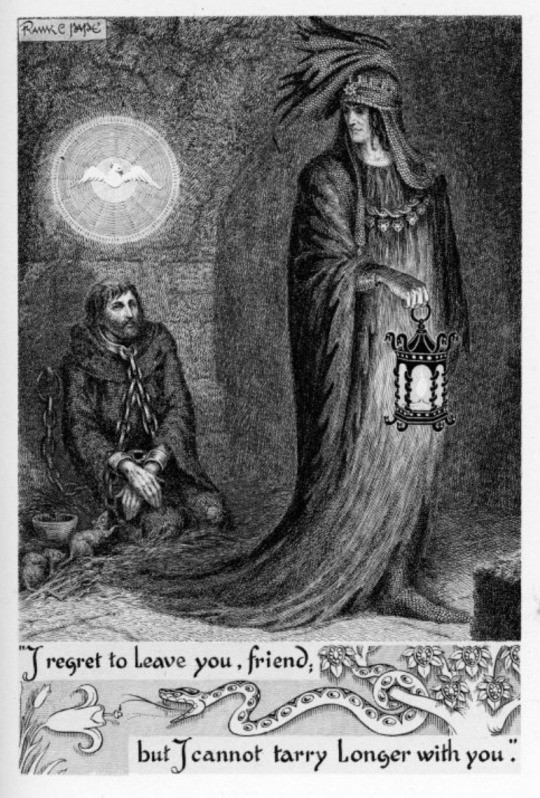



source
#beautiful books#book blog#books books books#book cover#books#vintage books#illustrated book#anatole france#frank c. pape#edwardian books#book binding#book design#old books#book collecting
133 notes
·
View notes
Text
Anything that lets us see a clear connection between effort and consequences—and that helps us feel in control of a challenging situation—is a kind of mental vitamin that helps build resilience and provides a buffer against depression.
— Matthew Crawford, Why We Drive: On Freedom, Risk and Taking Back Control (Bodley Head, June 4, 2020) (via A Layman's Blog)
10 notes
·
View notes
Text
[Through the Spanish Civil War] a new generation of writers was exposed to the realities of war, as the previous generation had been on the Western Front, but with some significant differences: this time it was a civil war fought between foreigners in a foreign country; and this time it was a war that was being fought for a cause in which the young believed. So though it seemed their own, it was not their own; and though it was ugly and destructive it was worth fighting. The lessons of the First War’s poets would clearly not serve for this one; one could only be Wilfred Owen with a difference. A new kind of war set a new literary problem—the task of finding literary forms for necessary violence.
Samuel Hynes, The Auden Generation: Literature and Politics in England in the 1930s (Bodley Head, 1976), pp. 243–4.
6 notes
·
View notes
Note
So I have a question that I only trust you to answer: I aspire to be a guy who's read Ulysses but google searches are giving me conflicting information on which edition is best. Gabler? Bodley Head? Random House? Which would you recommend?
I unequivocally recommend the Gabler edition for two reasons:
It's been the gold standard in Joyce studies for over three decades, which makes a lot of the scholarship more accessible to people outside of academia who are curious about critical perspectives on the text.
The line numbers and pagination are synced with Gifford's annotations, which are an invaluable resource for both first time readers and seasoned Joyceans, as they provide explanations and context for the references Joyce makes in the text. I think a lot of people (and ogres) are so intimidated by how dense Ulysses can get that it impacts their ability to become properly engrossed in the actual book, and the joy of discovery turns into another bowl of Kellogg's Cornflakes to resentfully shovel down in a bid for self-improvement.
That being said, the 1922 and 1961 editions both have their proponents—here is an article about how heated the discussion got at a James Joyce conference ("Miami J'yce") that took place about five years after the Gabler edition was released.
#ironically one of the most important messages in the book is that cleverness will not serve us as it served odysseus—it can't bring us home#ulysses#anonymous#assbox#i read much of the night and go south in the winter#james joyce
45 notes
·
View notes
Text










Publishers' Binding Thursday
This week's choice from the stacks is a 1928 edition of French novelist Gustave Flaubert's (1821-1880) Madame Bovary, published in London by John Lane The Bodley Head, Ltd. and in New York by Dodd, Mead and Company. Flaubert's work strives for a sense of realism and of perfection, always seeking "le mot juste"—"the right word." He famously said that "an author in his book must be like God in the universe, present everywhere and visible nowhere."
Madame Bovary was originally serialized in the Revue de Paris in 1856 and as a book in two volumes in 1857. There was an obscenity trial about the contents of the novel, which gained the novel notoriety. This edition features an English translation by British critic and translator J. Lewis May and illustrations by British illustrator John Austen (1886-1948). I believe that Austen did all of the illustrations for the book, including the charming wood-engraved tulip endpapers and the head and tailpieces at the beginning and end of each chapter. It is also likely that he designed the figure on the cover, which also appears on the dust jacket of the book (not pictured).
View more Publishers' Binding Thursday posts.
View more posts with work by John Austen.
-- Alice, Special Collections Department Manager
#Publishers' Binding Thursday#Gustave Flaubert#Madame Bovary#J. Lewis May#John Austen#Revue de Paris#publishers' bindings#publishers' binding#art deco#wood engraving
103 notes
·
View notes
Text

Hamzeh Carr (Australian Illustrator and Writer -no Bio available)
"And some maid told an ancient tale" 1926
Illustration from:
Sir Edwin Arnold The Light of Asia, London: John Lane The Bodley Head Ltd 1926, p. 44
23 notes
·
View notes
Text

Title: The Time Traveller's Guide to Medieval England | Author: Ian Mortimer | Publisher: The Bodley Head (2008)
4 notes
·
View notes
Text
So the emergence of 'a growing sense of social self-awareness, self-evaluation and self-control' was partially due to the widespread adaptation of....mirrors?
That's part of the provocative re-evaluation of the Middle Ages in the opinion of historian Ian Mortimer. Medieval Horizons. By Ian Mortimer. Bodley Head; 256 pages; £22
[I ended up as a history major in university but I confess my knowledge of the period was largely limited to serfdom and jus primae noctis]
7 notes
·
View notes
Text

This one is from Bodleian MS 764, aka the "Bodley Bestiary". This is actually a pretty nice bestiary; it's one of the ones with a wide selection of animals and some fairly elaborate illustrations. Yes, this illustration looks silly, but it's relatively large, detailed, and technically well-executed. Also I think that background is gold leaf. According to the listing at the Bodleian Library, it was made sometime between 1226 and 1250.
I go on a bit in this post, so I'll go ahead and put a cut here.
I do actually have access to a print translation of this one, so I can tell you that the description reads:
The scorpion is a land worm: it belongs with worms rather than serpents; it is armed with a sting; and it gets its name from Greek, because it stings with its tail and spreads its poison in a gaping wound. The scorpion has this property, that it stings the palm of the hand.
And then there's like three times as much text describing the scorpion's religious symbolism.
So let's look at this critter. At base, this is a pretty regular quadruped, apparently about the size of a cat if the hand is meant to be proportional. The perspective is odd; I'm not sure if this is just a highly-stylized top-down view or if it's actually meant to be hanging off that plant like some sort of demented flag.
There are a couple unusual things to point out. First, that's a weird quasi-human face, which I'd like to credit to the whole "scorpions have faces like virgins" thing, but I'm pretty sure it's actually just the artistic style. To support that claim, gaze upon the face of the Bodley Bestiary lion:
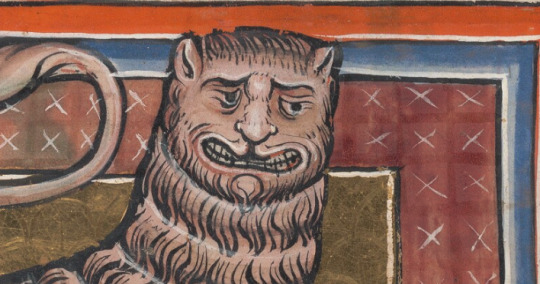
Second, I think this is the only scorpion so far I've seen drawn actually in the process of stinging someone, which is great, but the artist has decided to show this as a rigid spine going clear through a person's hand. Wild.
Third, and probably most important, what is that body shape? Where did that come from? I kind of wonder if the artist somehow had a concept of the scorpion as being low to the ground with a body wider than it is tall but knew virtually nothing else about them. It's kind of hard to interpret what's going on -- like, the silhouette is reminiscent of a horseshoe crab, but it can't possibly be a shell, because the legs are on the wrong side. If we interpret it as a shell, or as just like a weirdly bulky ventral portion, we have to ask how the hell this animal is meant to walk, because it clearly is wide enough to impede its legs. Look at that picture... here, I'll put it in again so you don't have to scroll up.

The legs are posed sticking out perpendicular to the spine here. Imagine this critter putting them down to walk. If that's a solid mass of any kind, it means that in order to move, it would have to keep its... knees? ankles? leg joints bent at a ninety-degree angle the entire time so its own body wouldn't get in the way. Like a turtle whose legs stuck out the top of its shell for some reason. I just don't think it works. The only way I can make sense of it is the one I jokingly suggested in the original post, where those are skin flaps like a flying squirrel. (This is complicated by the fact that the artist is unlikely to have ever seen a flying squirrel any more than they would have seen a scorpion, since the only species in Europe doesn't seem to reach even close to England... but look, I don't know what they were thinking. Bats, maybe.)
anyway. Points!
Small Scuttling Beaſtie? not that small, and whatever method of locomotion is happening here, i hesitate to call it a "scuttle", ✘
Pincers? ✘
Exoskeleton or Shell? friggin... maybe? my official position is no, but benefit of the doubt, ½
Visible Stinger? visible and actively stinging, ✔
Limbs? 4
And I have to say something here. This is a quadruped. And the way it's colored makes it look like it might be furry. I was considering this. And then... let's zoom in.
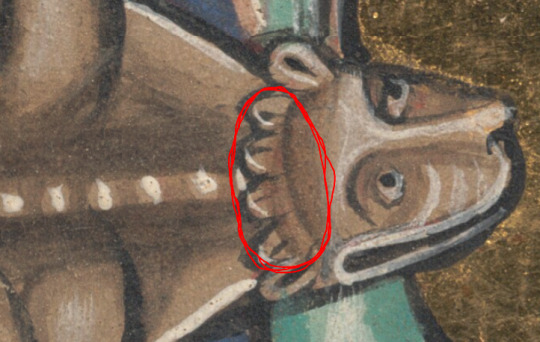
Those little details on the head there... okay, the two on either end are clearly the ears, but the stuff between the ears? You tell me there's a more plausible explanation than tufts of hair. Which... you know what that means?
🎉🎉🎉
That's a mammal!
🎉🎉🎉
Sorry, buddy, it's probably in bad taste to celebrate you getting a penalty, but I genuinely thought I was never going to use that one.
I'm not penalizing the resemblance to a flying squirrel, though, because like. I think it's unlikely that's what the author was basing this on. Case of convergent evolution.
Anyhow, -1. I think this is our first penalty for a reason other than wings. (By which I mean it definitely is, but I'm leaving the possibility open that something else shows up in the period between when I'm writing this and when I'm scheduling it to post.)
As for the vibes of this week's critter, I think it's charming in a way, but unsettling in enough ways that I want to keep my distance even for non-stabbing-related reasons. I'll give it a 4/5, on the assumption that those are skin flaps and not something else. Because if this is doing the reverse-turtle thing, that's bad vibes and the score would go down.
Total:
4.4 / 10
Whoever is being stabbed on the left there seems real nonchalant about it.
23 notes
·
View notes